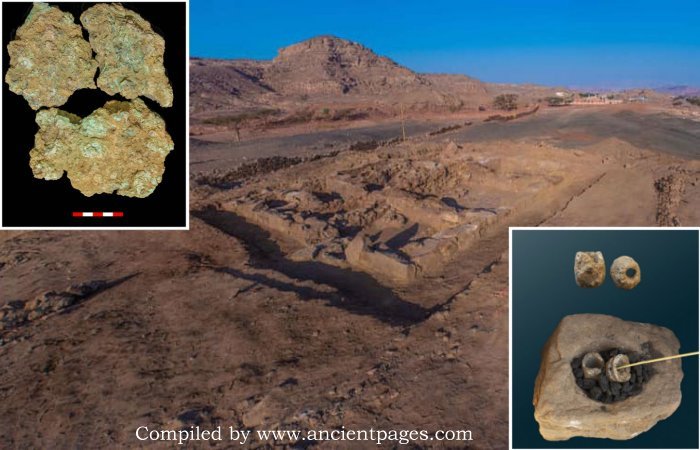Conny Waters – AncienPages.com – The ancient Egyptians were pioneers in metallurgy, being one of the earliest civilizations to engage in this practice. They primarily utilized metals such as copper, gold, silver, and iron. Copper was particularly significant and played a crucial role in Egypt’s industrial activities.
Wadi Al-Nasab. Credit: Ministry of Antiquities
In a recent development, an Egyptian archaeological mission has uncovered a copper smelting workshop along with administrative buildings and observation points at the Wadi El-Nasab site in South Sinai. This discovery provides valuable insights into the scale and organization of ancient Egypt’s mining industry. The site is recognized as a significant source of copper and turquoise, active from the Old Kingdom through to the Late Period, with its peak during the New Kingdom era, according to information from the Supreme Council of Antiquities (SCA).
Credit: Ministry of Antiquities
According to the Supreme Council of Antiquities (SCA), the site has been recognized as a significant source of copper and turquoise. It was operational from the Old Kingdom through to the Late Period, with its most active phase occurring during the New Kingdom.
Credit: Ministry of Antiquities
“The workshops, copper ingots of different shapes and sizes, and tuyère heads uncovered provide clear evidence of an advanced and well-organized system for smelting and casting copper before transporting it to the Nile Valley for use in craftsmanship, military tools, and administration,” explained Mohamed Ismail Khaled, Secretary-General of the SCA.
Credit: Ministry of Antiquities
Excavations have uncovered two sandstone buildings near the entrance of the wadi, which were originally lookout points and later transformed into smelting workshops during the New Kingdom period, according to Mohamed Abdel-Badie, head of the Ancient Egyptian Antiquities Sector.
Inside these structures, archaeologists discovered furnaces, slag, copper ingots weighing over one kilogram each, and clay tuyère heads in various sizes. Additionally, a third structure was identified as a control and observation post for mining expeditions.
Credit: Ministry of Antiquities
This building is believed to predate the New Kingdom era, as noted by Hesham Hussein, Head of the Central Administration for Lower Egypt Antiquities and mission director.
“We also succeeded in uncovering part of a large central workshop that contained multiple types of copper smelting furnaces, ore-preparation tools, ceramic crucibles, amphorae and Egyptian vessels, as well as large quantities of charcoal prepared from local trees and blocks of refined clay for manufacturing tuyère heads,” Hussein added.
See also: More Archaeology News
“Sinai was not just a mining hub; it was a strategic extension of the Egyptian state,” said Sherif Fathy, Minister of Tourism and Antiquities.
He stated that it demonstrates how ancient Egyptians managed natural resources in ways that “resonate with today’s concepts of sustainable development.”
The mission will continue excavations at Wadi El-Nasab, considered one of Egypt’s most important ancient mining centres.
Written by Conny Waters – AncientPages.com Staff Writer









